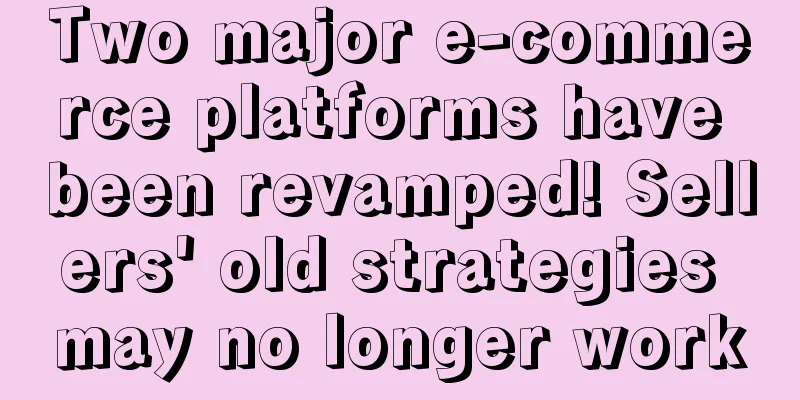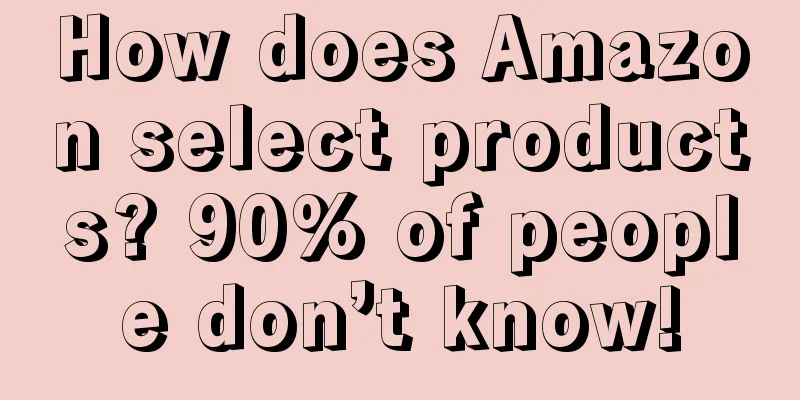Two major e-commerce platforms have been revamped! Sellers' old strategies may no longer work

|
If cross-border people are asked to summarize the unstable factors that make the road to overseas expansion thorny in 2024, the frequent policy changes of the platform must be one of them. The successive changes in platform price comparison rules and logistics cost adjustments have increased the operating pressure of many sellers. As we bid farewell to 2024 and enter 2025, the latest changes in the two major e-commerce platforms in the industry have become the focus of attention of cross-border sellers. It is learned that according to the announcement released by Amazon, on January 7, 2025, Amazon will remove the Prime-exclusive discount tool and integrate its functions into the price discount tool to simplify the discount setting process and improve management efficiency. After the revision, the Price Discount Tool will support all discount settings, including Prime exclusive discounts. That is, Amazon sellers need to use the Price Discount Tool to create and manage all discounts. The specific steps are as follows: 1. Open the "Advertisement" page and select "Price Discount" ; 2. Click "Create Price Discount" ; 3. Fill in the form. If you want to create a discount exclusively for Prime members, select Prime members as the audience type. According to the announcement, sellers will no longer be able to create new discounts in the Prime Exclusive Discounts tool starting January 1, 2025. Therefore, at the beginning of 2025, many sellers have said that they can no longer create Prime Exclusive Discounts as before. At the same time, combined with industry revelations, Amazon's revision also has the following two points that sellers need to pay attention to: First, the master account and sub-account have different access rights to price discount tools. The master account has access permissions by default, but sub-accounts need to be manually authorized - in "User Permissions", go to "Global User Permissions", select "Manage permissions for secondary users", and then set "View only" or "View and edit". Second, the qualification for using the price discount tool is that the store rating must be above 3.5. According to industry sources, there is a certain threshold for using the price discount tool: the store rating must be above 3.5, otherwise it will not be possible to create a discount. A seller revealed that his product has a 4.5 rating, but there is no seller rating on the account, so he is still not eligible to create a discount. In addition, although Amazon stated that the revision was to simplify the setting and management of discounts, some sellers revealed that after the revision, they had to wait six hours for each discount to take effect, and new SKUs could not be added in real time during this period, and could only be deleted . From this point of view, it will take some time for sellers to adapt to Amazon's revision. At the same time, some sellers have reported that although Amazon mentioned in the announcement that "the display method of Prime exclusive discounts has not changed", judging from the page where the current product prices are displayed, the display method has changed: previously, the Prime price was displayed below the normal price, but now the Prime price is displayed first , which means that products that can use Prime exclusive discounts are more likely to attract purchases. Here, we suggest that all sellers, on the one hand, need to understand the functions of the price discount tool in advance and adapt to it through actual operations to avoid affecting subsequent operational efficiency; on the other hand, they also need to pay more attention to the store rating. If it is close to 3.5, they can optimize operations as soon as possible to improve consumer satisfaction and thus improve the score. However, compared with Amazon's small move to revise its discount settings, Temu's new store opening rules for the New Year have a greater impact on sellers. 123 learned that according to industry sources, Temu recently issued an update notice on store opening rules: Starting from January 1, 2025, a company entity on Temu only supports opening ≤ 2 stores, that is, only 1 fully managed store and 1 semi-managed store can be registered each. For newly registered entities, regardless of whether they have the need for multiple stores, they will not be able to open more than two sub-stores after the new regulations come into effect. For old registered entities, the number of stores on Temu will be fixed, and new stores can only be added in the following two situations:
It is understood that before this, individual entities on Temu could open 3 sub-stores, and corporate entities could open 20 sub-stores. The huge difference in numbers caused a heated discussion as soon as the news was exposed. Judging from feedback from the industry, some sellers are obsessed with "bugs" and want to open more sub-stores before the new regulations are fully implemented. Another group of sellers have begun to explore changes in platform operations after the new regulations come into effect: the old repeated distribution strategy may become completely invalid. A senior seller analyzed: After the new store number rules are adjusted, Temu will intensify its crackdown on duplicate distribution. It is understood that in the past, many big sellers on Temu used store groups and duplicate distribution to eat up the hot-selling products on the platform in a short period of time, thereby achieving the purpose of price control, which is definitely not what the platform wants. Some sellers also mentioned that from the perspective of platform development, Temu’s move may also be a preparation for a subsequent self-operated model. It is learned that as early as the beginning of 2024, there were news in the industry that Temu was planning to start the POP mode (third-party platform mode) and move towards the "self-operated + platform" business model. In November of the same year, the news once again swept the cross-border circle. By limiting the number of stores that can be opened by the same entity and cracking down on duplicate distribution, Temu will have the opportunity to guide sellers to shift to refined operations and redefine the rules for traffic distribution. However, for now, Temu has not responded to the rumors. It is difficult to say whether it will launch a "third-party platform model" in the future and what the traffic distribution rules of this model will be. But there is no doubt that the news that "Temu will limit the number of stores that entities can open in 2025" is almost set in stone. At present, a large number of Temu sellers have reported that they have received notifications from the backend or buyers. Here we also remind relevant sellers to be mentally prepared and adjust their operating plans for the new year. What do you think of the above revisions or new regulations? Welcome to discuss in the comments section~ |
<<: Shipping costs surge at the start of the year! A group of sellers' profits are wiped out
>>: Monthly sales of one million dollars! This product on Amazon is a big hit
Recommend
New seller support plan is launched! Amazon will personally diagnose your store
Amazon, led by Bezos, is a multinational company t...
What is Lu Cong? Lu Cong Review
Lu Cong, a cross-border Internet marketing profess...
[For reference only] Analysis of eBay sites
I have been struggling with account issues these d...
What is Lorna Jane? Lorna Jane Review
Lorna Jane is an Australian clothing brand founded...
What is Shenzhen Yike International Logistics Co., Ltd.? Shenzhen Yike International Logistics Co., Ltd. Review
Shenzhen Yike International Logistics Co., Ltd. is...
Emergency suspension of flights! The British virus has mutated! Many European countries have officially announced...
Recently, the global epidemic has rebounded again,...
More than 400 million counterfeit products were found on seven major platforms including Amazon and Walmart!
<span data-shimo-docs="[[20,"获悉,根据美国专业打假机构...
Big news! New changes have taken place in Amazon's delivery process!
The express delivery giant UPS will launch a natio...
Alibaba's "American Dream" shattered as the goal of one million B-end sellers was not achieved
It is learned that according to FT reports, Alibab...
What is Gleebill? Gleebill Review
Gleebill Global Solutions Inc. (Gleebill) is a fin...
Got bankrupt overnight? A Shenzhen cross-border company ran away due to unpaid rent, and the FBA fees of the European site increased again!
▶ Video account attention cross-border navigation ...
There's nowhere for bad reviews to hide? Amazon AI review summary officially launched
“Products are like iron, reviews are like steel. I...
Important! Amazon's recent new features + Apollo control ACoS system
text Brand owners can now view search query perfor...
Almost no solution! Amazon strictly investigates fake reviews, and if caught, it will be directly judged as double-brush!
▶ SellerSprite & Cross-border Ant Discount Co...
What is Overseas Shopping? Overseas Shopping Review
Overseas shopping is to search for overseas produc...









